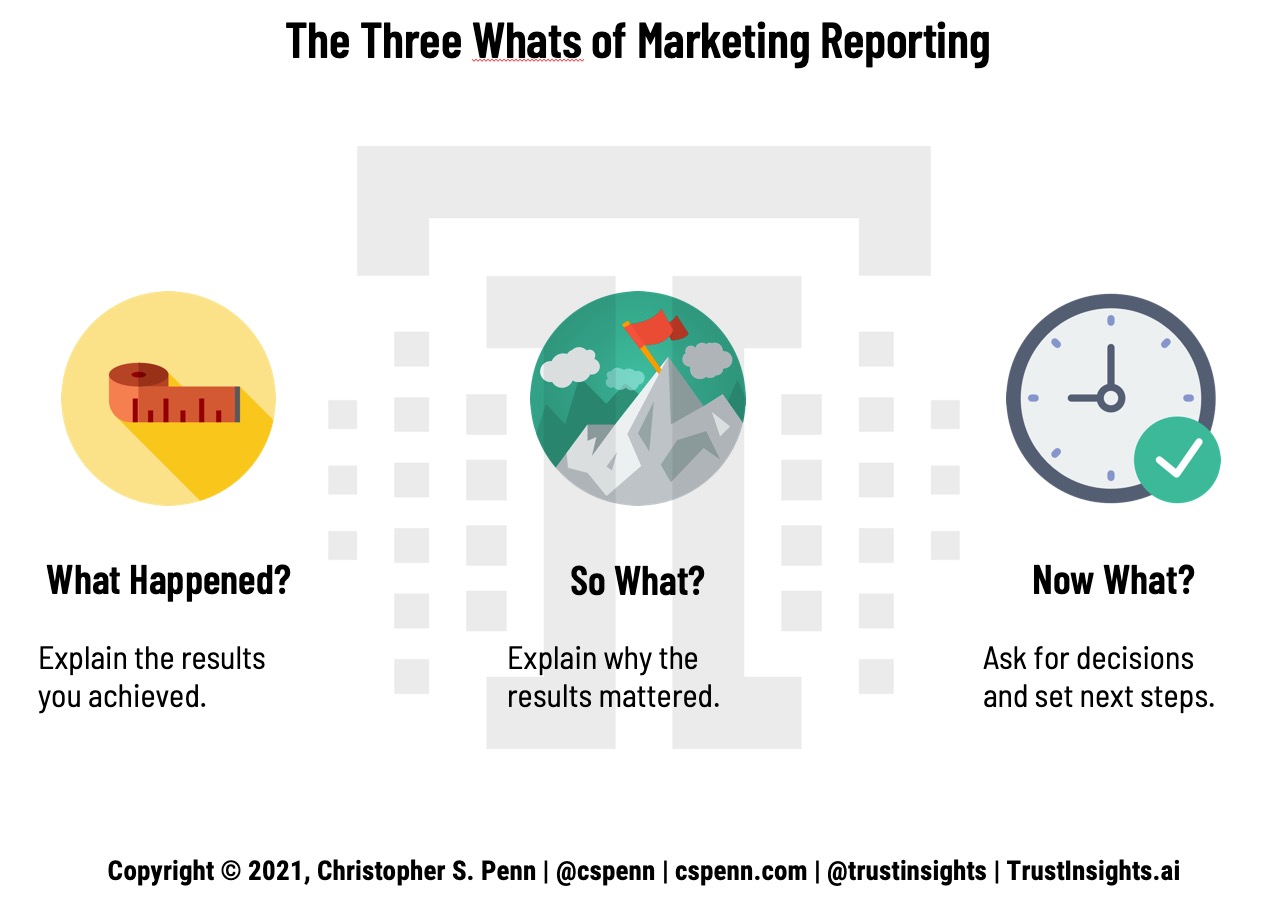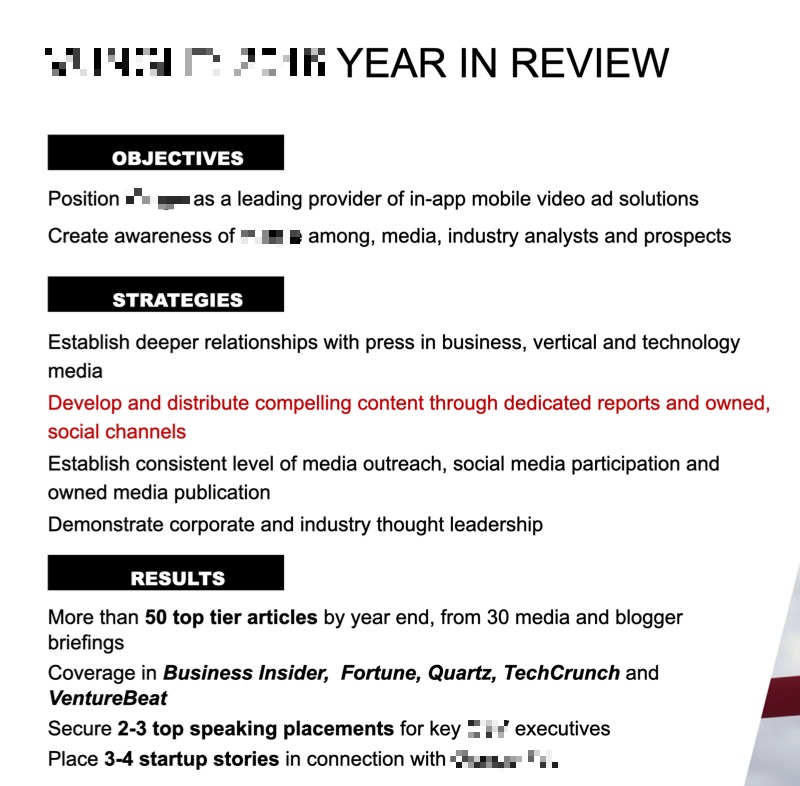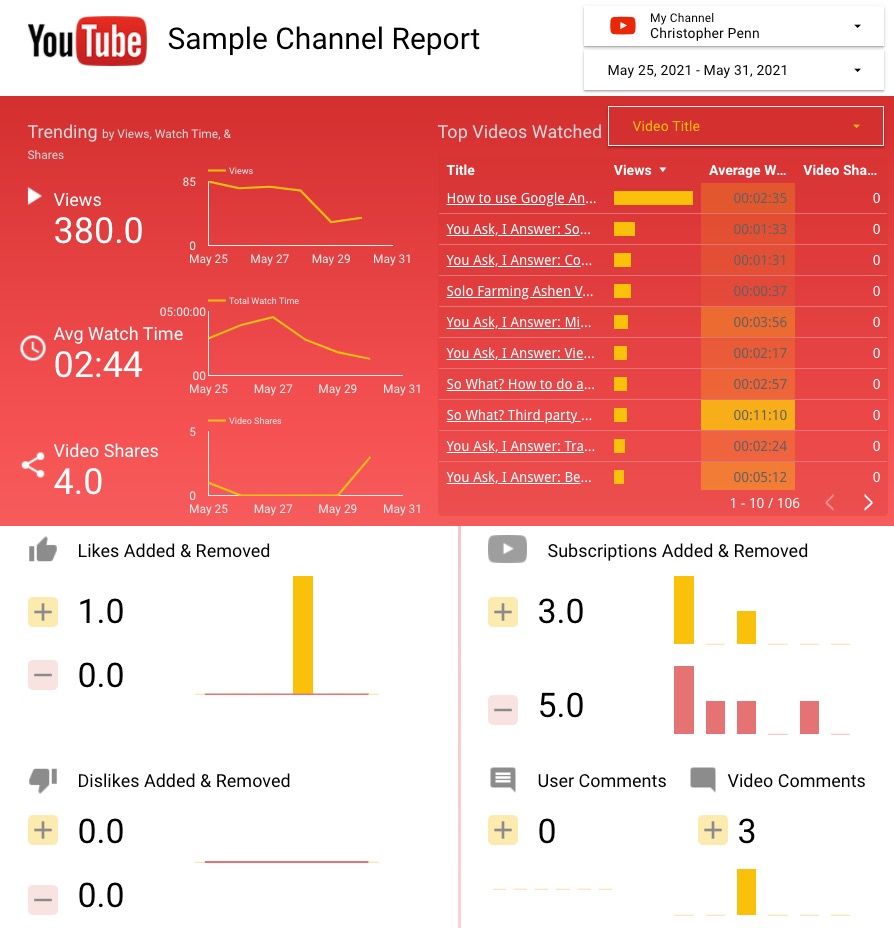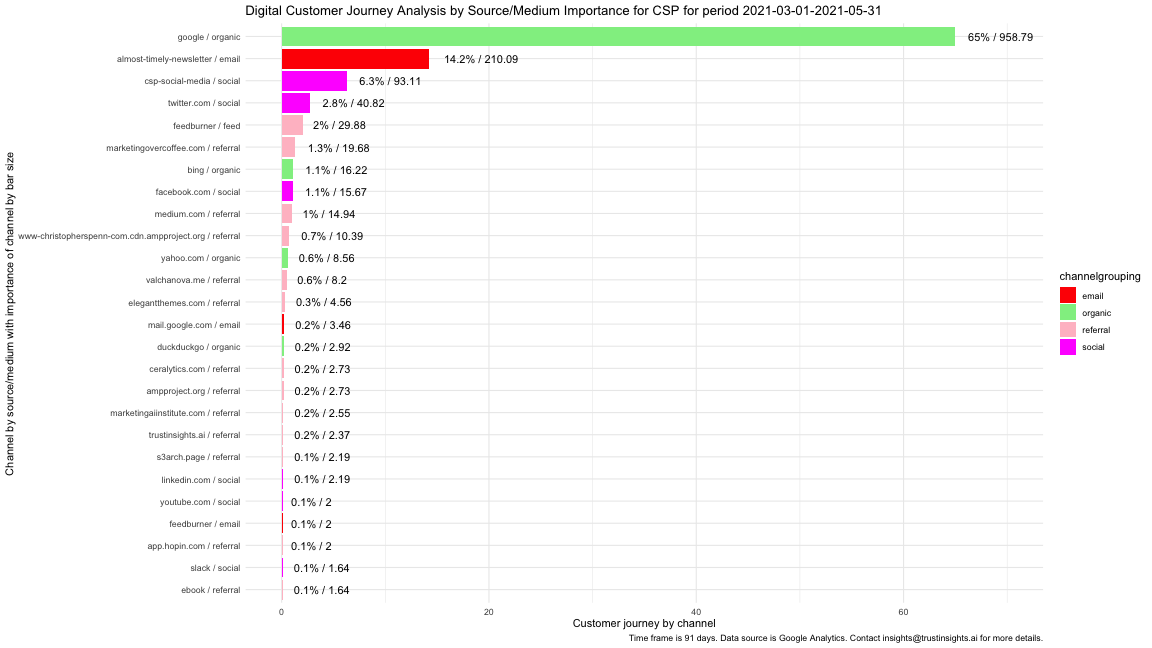
Let’s be candid: most marketing reporting sucks. It’s either so superficial and activity-based that it doesn’t tell us anything, or it’s a truck backing up, dumping data all over our desk and expecting us to sort through it all.
Neither helps us improve our marketing. What’s the solution to this conundrum?
One answer is a framework I call the three what’s:

- What happened?
- So what?
- Now what?
Let’s dig into each of these.
What Happened?
What happened is fairly straightforward. What does our data tell us? And yet, even this can be a challenge because an uncomfortable amount of marketing reporting is spent on activities. Take a look at this example from an agency report:

This is what happened, that’s true, in the sense that it is activity based. Someone did those activities. But these are not results. These are not outcomes. At the end of the day, no one cares how hard we worked. Everyone cares what we achieved, what results we brought in.
Look at the results section of the report above. What’s the business impact of these results? What was the marketing impact? Did we earn more traffic to our website? Did we create more conversions? What actually happened? It’s not clear from the results presented what really happened as a result of our activities.
Key takeaway: present results, not activities, in reporting.
So What?
So What? is my friend, partner, and CEO Katie Robbert’s favorite expression. After we present our results, we have to answer the question of so what? So what does this mean? What impact did these results have?
For example, this is the stock Google Data Studio report for YouTube, the template that you’re given as a starting point for using Data Studio:

This is definitely an improvement over the agency report earlier, in that we have quantitative results, but this report completely lacks any context, meaning, or impact. I earned 380 views on my views.
That and $5 will get me a cup of coffee at Starbucks. 380 views doesn’t mean anything. Is that good? Is that bad? Is that an improvement or a decline? This report doesn’t help me understand whether I’m doing well with my efforts on YouTube or poorly.
Granted, there are things that no report can capture. If I changed strategies and started posting cat videos instead of my usual content, you wouldn’t necessarily see that reflected here, and the analysis presented would have to include that, especially if there was a significant variance in the results.
However, in general, even quantitative reports need to explain the implications of the results. Mentally ask yourself after each piece of data, “So what?” to wring more value out of your reports, and keep doing that until you connect the dots to real business value.
For example, let’s say I’m looking at my newsletter issue from this week. I earned 24,637 opens of my email.
- So what? Well, it means that tens of thousands of people read my newsletter.
- So what? That means I sent thousands of clicks to my website and other valuable digital properties.
- So what? That means I generated leads for my sponsors and my company.
- So what? That means I justified the sponsor fees paid.
- So what? That means I can continue to charge the same amount or possibly increase my sponsorship rates.
Ah ha! After playing the So What? game, we arrive at the real meat: I can make more money. Generally speaking, our stakeholders care about earning more revenue, saving time and resources, and reducing costs. Better, faster, cheaper. Keep playing the So What? game until you arrive at a conclusion that aligns with better, faster, or cheaper.
Key takeaway: connect results to business impact.
Now What?
Now What? is the third leg of the reporting stool. Now What? is where we prove our value, by focusing on the actions we need to take, the decisions we need to make. Everything up until this point shows what happened in the past. Now What? is about making decisions for the future.
What decisions do we want people to make? What actions do they need to take?
Here’s an example of the attribution analysis report for my website:

I see what happened – that organic search drove 65% of my conversions for the last 90 days. I see email and social media playing key roles. I understand what happened.
I know why I earned the number of conversions I did, as well as what didn’t earn me conversions.
But the key question is, now what? What should I do more of? What should I do differently? For example, I see that what I share on social media earns more than double the conversions of interactions. I’m sharing the right content, so I need to double down and make sure I’m sharing the absolute best stuff possible. That means digging into more topic research to identify things that garner high interaction rates, as well as building a model of what doesn’t work so I stop sharing content people don’t care about.
I see SEO as a key driver of my website. I need to find out what I’m being found for, make sure it’s aligned with my overall goals, and then double down on the stuff that’s working.
If I were still doing a daily video show, I would most certainly kill it off now. YouTube accounts for 0.1% of my conversions over three months. That’s terrible performance. As a channel, it’s just not working for me – and never really has. In this report, YouTube has proven that even though I got results, they had no impact, and thus the decision I need to make is whether or not to continue my efforts there.
Now What? is where we prove our value as marketers. It’s trivial to copy and paste numbers from a spreadsheet to a slide deck. It’s valuable to explain why we need to either stay the course or change course, and give our stakeholders straightforward decisions to make. If we are the stakeholder, then any reporting we’re looking at should be presenting us with decisions to make and then outline the timeline of when those decisions will be executed.
Key takeaway: any report that doesn’t ask for decisions is not doing the best job possible.
Use the Three Whats Often
If we use the Three Whats to focus our reporting, it will improve. Our reporting will be shorter and much more focused. It will stand out because it creates value and invests time instead of wasting it. And we will make better decisions, decisions informed not only by data, but also analysis and insights. Apply the Three Whats to your marketing reporting today.
You might also enjoy:
- You Ask, I Answer: Retrieval Augmented Generation vs Fine-Tuning?
- You Ask, I Answer: Reliability of LLMs vs Other Software?
- You Ask, I Answer: AI Music Collaborations and Copyright?
- Mind Readings: What Makes A Good Conference/Event?
- You Ask, I Answer: Retrieval Augmented Generation for Tax Law?
Want to read more like this from Christopher Penn? Get updates here:
 Take my Generative AI for Marketers course! |


Leave a Reply